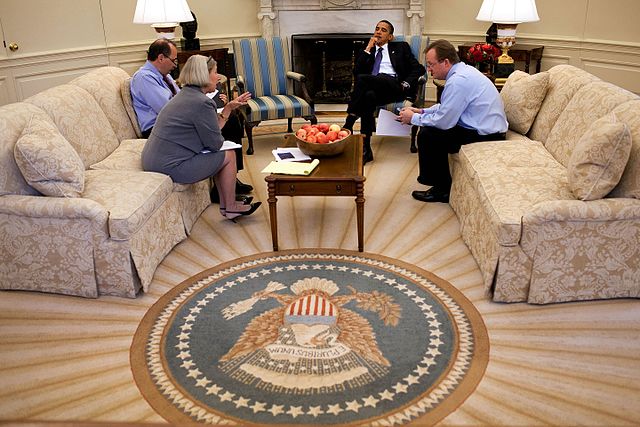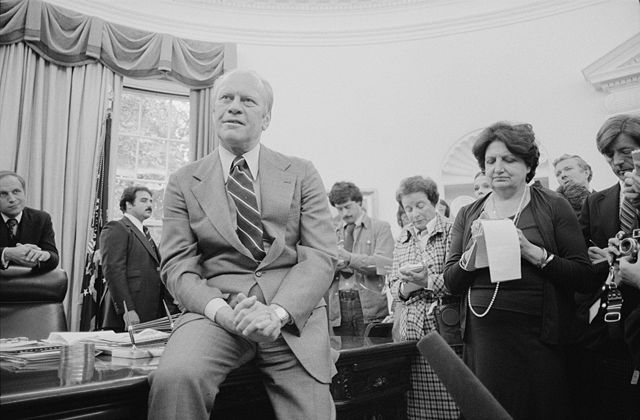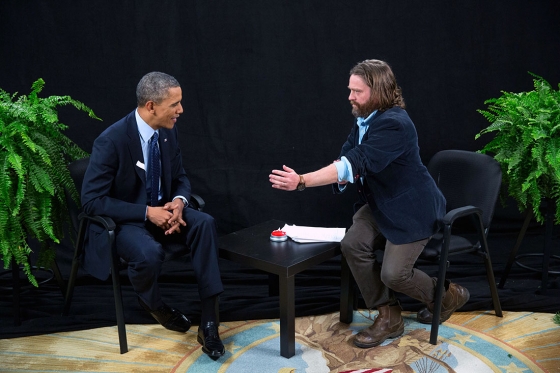When President Barack Obama took office, there was no White House chief digital officer, and very little in the way of a digital office. At the time, you could not access Facebook from White House computers. The White House had never sent a tweet, and the phone cord had not been cut by millions of Americans who were just buying their first smartphone. The idea of a two-screen or dual-screen experience was in its infancy.
There is a romanticized view of the White House communications and press office that West Wing viewers bring to the table when contemplating the suite of offices across from the Roosevelt Room. There is a cynical view held by the press and some in the public of the operation as an information control, state media propaganda machine—the so-called “permanent campaign.” And in some quarters, there is still nostalgia for the days of legendary communications greats like Mike Deaver and the beautiful visual images of the Reagan White House.
As those of us who were part of the incoming Obama Administration in 2009 came to know, the reality was very different. The lessons that we learned at the White House are particularly relevant for the next president’s team during the crucial first year: Don’t be afraid to change as the media environment evolves. Be an early adopter of new technologies. Go where your audience is and don’t expect them to come to you. Engage your allies. Allocate your resources appropriately.
The team of communications professionals coming into this office in 2017 will have just been through a presidential campaign where you’ve lived the newer reality of the multiplicity of platforms, the continued consolidation of legacy media, and the competitive drive for clickbait, when the challenge of attracting the nation’s increasingly short attention span for more than a moment appeared more daunting every day. And now for the even tougher reality: Communications when governing takes more time and effort than communications on a campaign. The one thing to remember is that you are about to have to do a lot more, with a lot less.
The hardest lesson for us to accept in 2009 was that the bully pulpit—the ability to command the nation’s attention using the office of the presidency—does not exist, except at times when the nation wants to hear from the president. Those times are rare, such as national crises or moments of triumph. The ability to hold the attention of the nation when you want, how you want, and on the issues you want is no longer part of what you get when you move into the White House. There is no magic associated with winning the White House that changes the realities of communicating in 2017, and accepting this fact now will help you design a communications operation that meets the needs of your new president.

The hardest lesson to accept in 2009 was that the bully pulpit does not exist, except at times when the nation wants to hear from the president.
To that end, think about the White House communications operation as part of a system that is delivering vital information to the American people how they want it, when they want it, on the platforms where they receive the news in full or in chunks, interactive or in six-second Vines, on tablets or phones or television, on YouTube or network news, or everything in between. A huge part of the task ahead of you is figuring out who is following what news through which mediums or platforms, and effectively using that knowledge to deliver the news people are looking for where they expect to receive it. And, as you already know from your campaign, that is a resource-intensive process.
Here’s why it is important: The ability to communicate effectively is central to the ability to govern effectively. While communications is often lumped in with the political functions of the White House, seen as concerned with enhancing the president’s image, poll ratings, and reelection prospects, the reality is that communications is much more of a governing function— educating the public and working to build consensus around policies. This means that White House communications takes proportionately more presidential time, staff, and resources than campaign communications, where you could draw on a much larger staff, millions of dollars for television and digital advertising, state-based press operations, and a significant digital team to get your message out. In a polarized nation whose news sources are fragmented, the amount of time the president, vice president, and cabinet officers will need to take to communicate basic policy choices and information is much more than anyone senior to you on the staff will want to give you. It's not a question of “taking care of the press corps” or “Comms wants some time to do some things around the speech”—it is critical to the education and consensus function of government.
In addition to using the multiplicity of platforms in interesting and engaging ways to communicate with the public, the White House website (wh.gov) is an important tool for original content. The White House as a content provider is not a new concept—after all, what is a press release or a speech if not original content? During the 2016 campaign, the president-elect communicated directly with the American people in numerous ways—print, television, and radio interviews, op/eds, tweets, Facebook videos, podcasts—some of which were through the news media and many through the campaign website directly. Using wh.gov to continue that direct engagement is a critical way to communicate with the public. This is not in competition with the role the news media play; as with everything in communications, it’s additive.
As Facebook becomes America’s largest media company, and the redefinition of media continues with breaking news covered by civilians on Periscope and Facebook Live, the relationship with the White House press corps and utilization of White House press briefings and press conferences should be revisited as well. Whatever tensions existed during the campaign, winning the White House provides a great moment to push “reset.” The White House press corps plays an invaluable role in our democracy, and some of the best journalists in America are in that press room every day. You can do both the White House and those journalists a great service by modernizing the White House briefing process, which is labor intensive for you and often not as productive for the reporters participating as both sides would like. Consider taking the briefing online once or twice a week, to encourage greater participation, and doing more issue-specific briefings to go in-depth on policies that your administration is pursuing.

The White House press corps plays an invaluable role in our democracy and includes some of the best journalists in the country.
Another use of the briefings that you might want to consider is to provide access to senior White House officials on a regular basis, in addition to the press secretary, so that reporters have the opportunity to speak with decision makers and policy makers directly. Decades of media consolidation, buyouts, and tight newsroom budgets have resulted in less expertise and specialization in the press and fewer beat reporters who truly understand issues in depth. You can be frustrated that your press corps doesn’t have that expertise and falls back on process stories, or you can take the time to educate them in hopes of a different and better outcome. Momentum and horse-race coverage of your legislative priorities (replacing the momentum and horse-race coverage of the campaign) is not as important as combating the misinformation and lies that will be attached to your issues. As you know from your campaign, if not vigorously disputed, an inaccuracy or untruth becomes a bad fact, and then a fact, for large numbers of people.
You will walk into a White House communications operation that has been adapting since 2009 as the media environment has evolved. Both the structure and the infrastructure of the office need to reflect the continuing changes, which means you will need to review what you have against what you need on an ongoing basis. In a dynamic media world, the White House can’t be static. Be an early adopter of new technologies. Fight for resources for your cabinet agencies’ communications operations as well—the White House can only communicate so much. Cabinet agencies and officials can do a great deal to help the overall effort, but not if they are working from a 2004 or 2008 model.
On February 9, 2009, in his first White House press conference, President Obama “crossed a Rubicon of sorts” in the words of Time Magazine by becoming the first president to call on a reporter from a web-only site (the Huffington Post) at a White House press conference. By Obama’s final year in office, it was no longer news that the president was using nontraditional forums such as “Between Two Ferns” to promote enrollment in the Affordable Care Act; The Players Tribune and a video interview with Derek Jeter to promote “My Brother’s Keeper;” a discussion about technology in emerging markets with Mark Zuckerberg on Facebook Live; or individual interviews with a broad range of reporters, columnists, bloggers, radio hosts, local television anchors, and entertainment personalities to reach audiences beyond traditional White House news outlets.

President Obama used nontraditional media forums such as appearing on “Between Two Ferns” to promote enrollment related to the Affordable Care Act.
What worked for you during the campaign in terms of communication is even more important when applied to the goal of governing. Every day you will need to allocate your limited resources—presidential time, senior staff time, communications staff bandwidth—to build support for the president’s agenda and make sure the American people feel their White House is communicating with them. One thing that is certain: The communications operation will look very different at the end of four or eight years than it did when taking it, and you will be using platforms that may not exist today to communicate with the public.